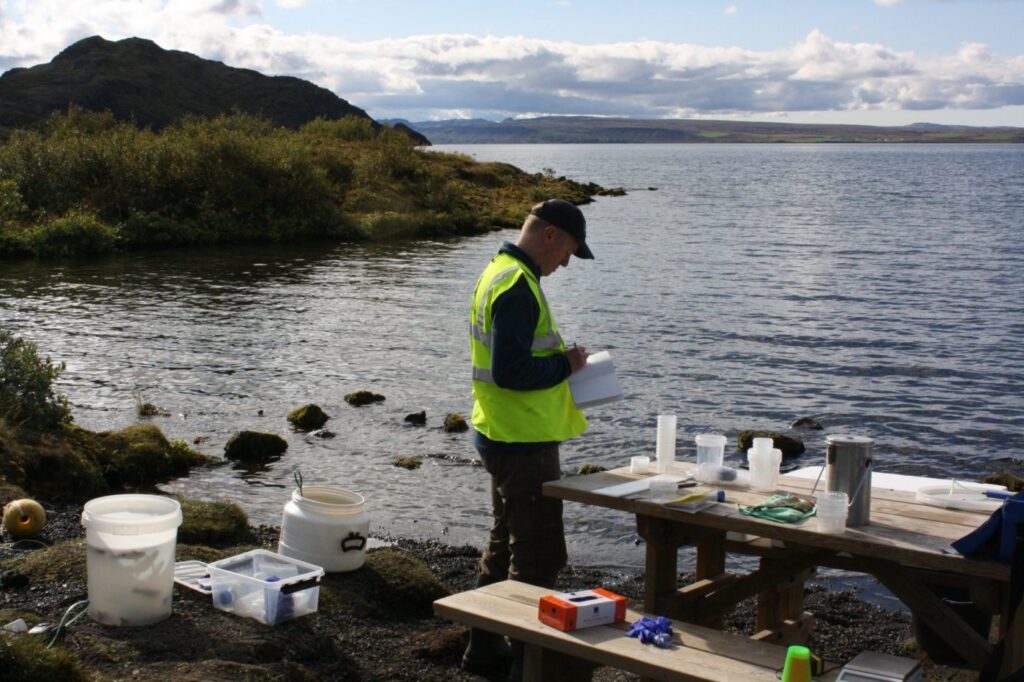Principal investigators

Arnar Pálsson
Professor in bioinformatics at the Faculty of Life and Environmental Sciences
- Sími:525 - 4265
- Netfang:apalsson [at] hi.is
My research tends to focus on evolutionary genetics, specifically the the genetic and developmental correlates of adaptive changes and neutral modifications of populations and species undergoing evolutionary changes. For the last 13 years I have been working with Arctic charr and also recently the related Brown trout. With our colleagues at University of Iceland we have addressed questions of adaptive divergence in the sympatric morphs in Lake Thingvallavatn, using population genomics and developmental transcriptomics.
Out of the large set of interconnected projects that the group works on, we have been contributing mainly to studies of the population genetics of anadromous charr in Iceland, stream charr and their connectivity with landlocked populations and relationship of plasticity and divergence. The last project involves experimental work to study the levels of developmental plasticity in Arctic charr and how this relates to trophic specializations. We are comparing developmental responses between two sympatric charr pairs, and use anadromous population as a reference group to represent the ancestral plasticity and traits. The experimental treatment was administration of pelagic vs. benthic diet, which mimics the dietary specializations of sympatric charr and diverging salmonids in many systems. We are conducting analyses of external morphology, internal feeding structures and gene expression in fish reared in this experiment. This work is done in collaborations with researchers in Canada and Iceland.
My main research focus is on adaptive divergence, parallel evolution and speciation and for the last 15 years I have been working with the very special Arctic charr system in Iceland. I am currently leading two large research projects dealing with the genomic basis of adaptive differentiation of the Thingvallavatn Arctic charr morphs and the evolution of reproductive barriers in sympatric Arctic charr morphs.
Lately, I have also been involved in developing techniques for gathering ecological data which can be used to model the effects anthropogenic activities and climate change will have on salmonid species. The last few years I have been working closely with the Thingvellir National Park, informing them what our latest finding are, supplying photo and video material for their visitor centres. Since 2018 I have been working with Professor Benjamin Hennig from the University of Iceland on developing an efficient, low cost pipeline using commercially available drones and remote sensing techniques to monitor salmonid spawning grounds.

Kalina Kapralova
Research specialist at the Institute for Experimental Pathology at Keldur
- Netfang:kalina [at] hi.is

Sigríður Rut Franzdóttir
Associate Professor in developmental genetics and molecular biology at the Faculty of Life and Environmental Sciences

Sigríður Rut Franzdóttir
Associate Professor in developmental genetics and molecular biology at the Faculty of Life and Environmental Sciences
- Sími:525 - 4604
- Netfang:sirrut [at] hi.is
To come

